
You don’t need to be a wildlife expert to notice something unusual moving near your feet. California’s serpents blend into their surroundings with ease, but each one leaves a quiet mark on the ecosystem. Curious about what they are and why they matter? Let’s discover more about them.
San Francisco Garter Snake (Thamnophis sirtalis tetrataenia)
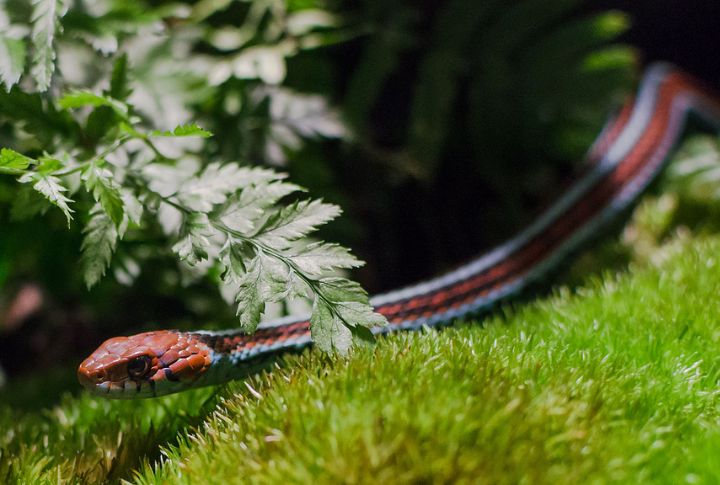
Banned from the pet trade and still vanishing, the San Francisco garter flashes electric blue and scarlet. Its habitat is found in wetland sedges near San Mateo, and its main food, the California red-legged frog, is also federally threatened. When the frog population drops, the snake takes the hit, too—a chain reaction neither species can afford.
Red Diamond Rattlesnake (Crotalus ruber)

It favors warm, coastal scrub from San Diego up into Baja California, moving slowly but striking fast when disturbed. Identified by its reddish diamond pattern and heavy build, this reptile delivers hemotoxic venom that breaks down tissue. Unlike its Pacific cousin, it’s more mellow but can still deliver a dangerous bite. Rattles are polite warnings, not apologies.
Long-Nosed Snake (Rhinocheilus lecontei)
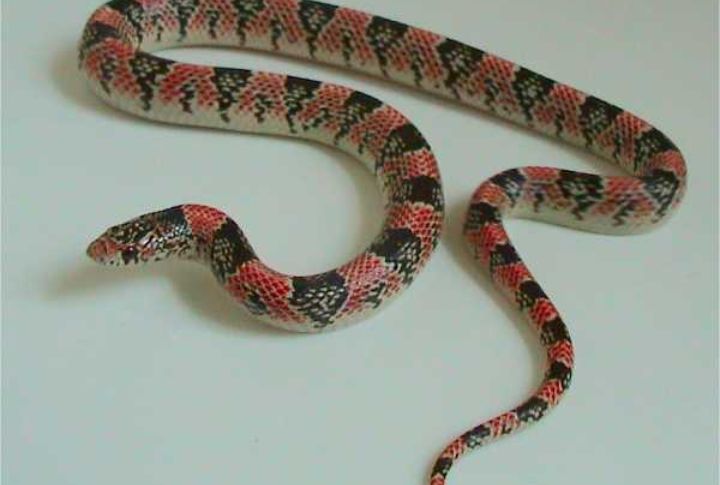
Try flipping a shovel in loose desert sand at dusk, and if you’re lucky, you’ll glimpse this elusive burrower with red and black bands over pale cream. Despite the bold colors, it’s all bluff, being a nonvenomous and shy species. It mimics coral snakes found elsewhere. The long snout aids the critter in burrowing and foraging for prey like lizards and small snakes in loose soil.
Rubber Boa (Charina bottae)

Looking like a toy snake forgotten under a log, the rubber boas thrive in cooler mountain forests and chaparral zones, hiding in root tangles. Constriction is their weapon, not venom, with a diet of nestlings and young rodents. That blunt tail, rough like a second head, confuses predators long enough to escape. It’s said to be calm and nearly unbothered by humans.
California Glossy Snake (Arizona elegans occidentalis)

Desert twilight brings it out—smooth-bodied and sand-colored. With a skin that gleams like waxed parchment, it is built for blending into inland valleys and dry basins. While primarily nocturnal, it’s a strong constrictor, eating lizards and mice. It’s not often seen, but it’s present across the Mojave and Central Valley, especially in undeveloped areas.
Sharp-Tailed Snake (Contia tenuis)
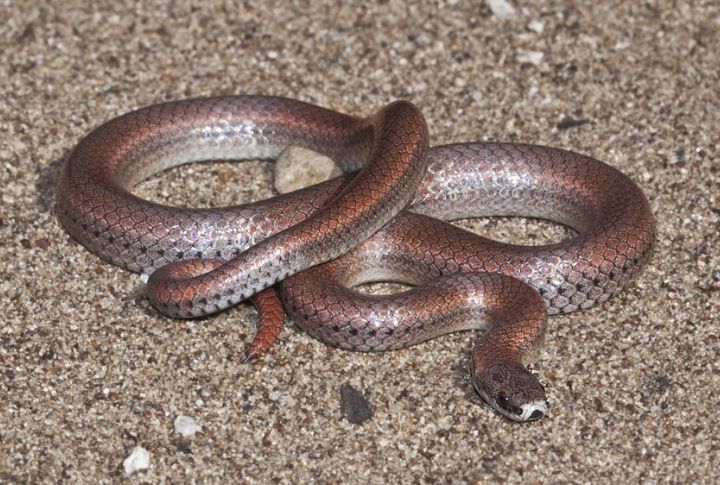
It’s not flashy, simply a red-brown wisp under moist bark or leaf litter. Here is a creature that prefers cool, damp woodland edges and feeds almost exclusively on slugs. The story behind the name? A tiny, needle-like tail tip—not a stinger but more like a spine. You’ll likely miss it unless you’re gardening or flipping rocks in Northern California’s shaded forests.
Speckled Rattlesnake (Crotalus mitchellii)
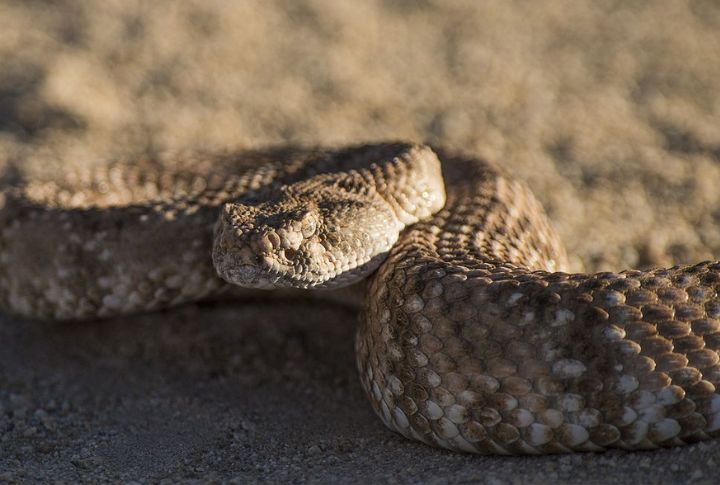
Granite boulders and dusty cliffs make it nearly disappear. In beige, gray, or even pink, the speckled rattlesnake comes in custom camouflage, depending on local rock color. Found in the Mojave and Sonoran deserts, it’s shy but venomous. Heat-sensing pits help it hunt kangaroo rats and birds. Most people see it only when it’s coiled and annoyed.
Western Yellow-Bellied Racer (Coluber constrictor mormon)
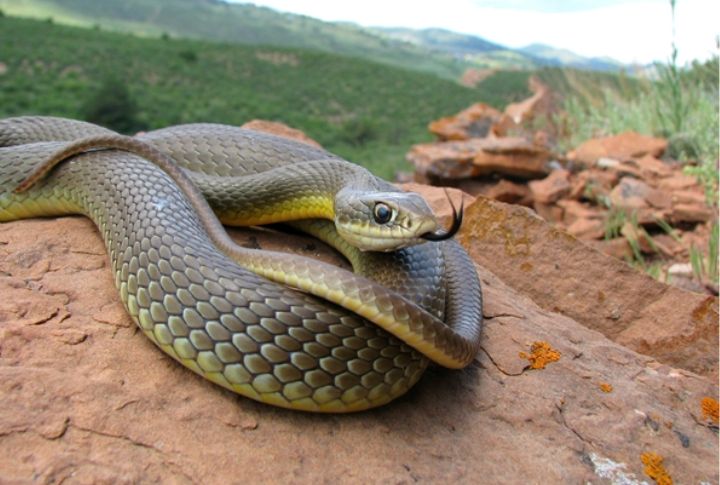
This serpent darts through meadows and scrubs with its eyes scanning and body always in motion. As a juvenile, it’s speckled and brown; adults show off olive tops and sunny bellies. Unlike ambush predators, racers chase their prey. They’re fast and curious—traits that also make them hard to photograph and harder to catch.
California Kingsnake (Lampropeltis californiae)
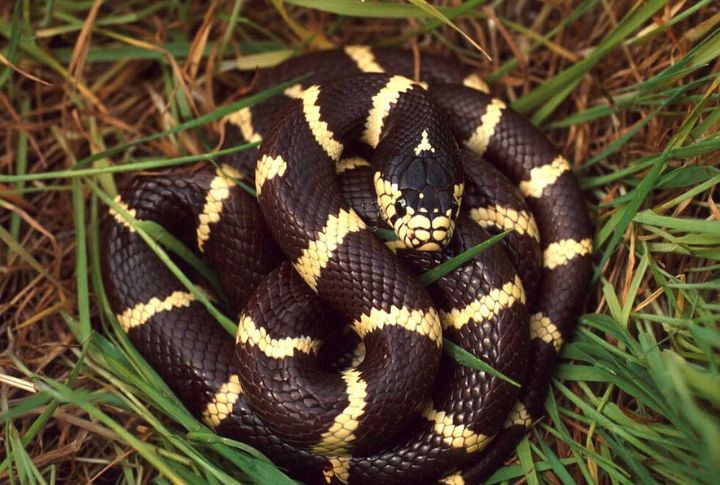
Immune to rattlesnake toxins, it coils around and consumes other serpents, even venomous ones. Alternating black-and-white bands are typical, but some may have brown or even striped patterns depending on geographic variation. As flexible eaters, they’ll take whatever is small and wriggling. This is one of the most widespread species in the state.
Two-Striped Garter Snake (Thamnophis hammondii)
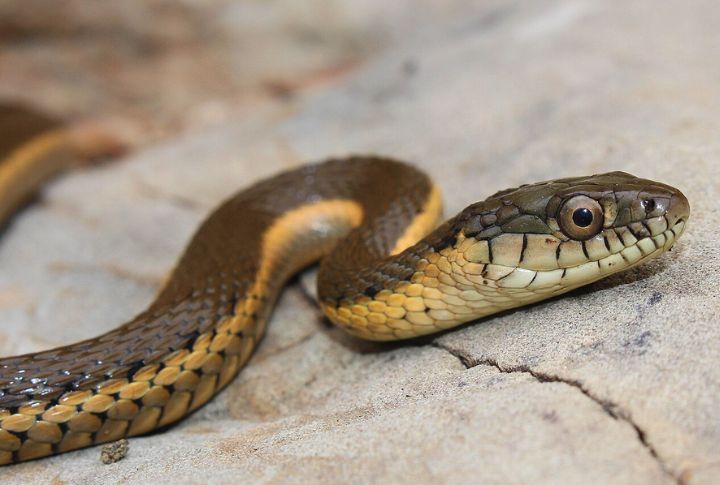
Follow a creek through the chaparral, and you might see twin yellow stripes slithering across river stones. Not venturing far from water, this garter relies on native fish and amphibians for meals. The snake’s range extends through Southern California, but development has confined these creatures to limited spaces. Harmless and quick to flee, most people never spot them twice.
Alameda Striped Racer (Masticophis lateralis euryxanthus)
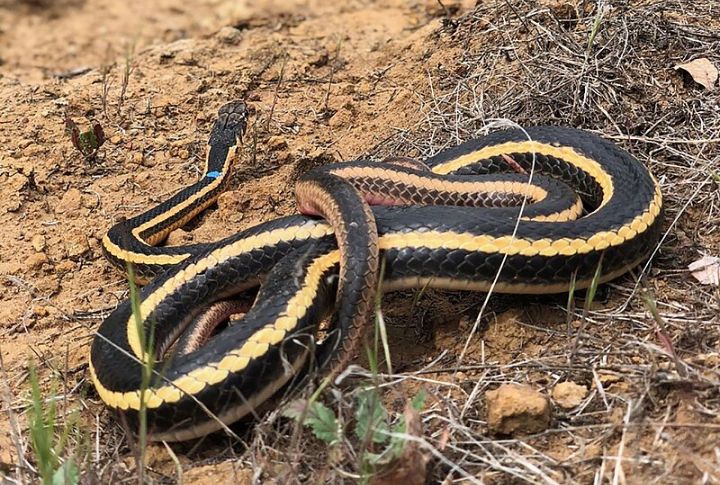
Only a few places in the East Bay still host this rare, federally threatened subspecies. Speed is its edge, as it’s capable of zipping through grasslands faster than most predators can track. Black with creamy side stripes, it hunts lizards and insects during the heat of the day. Currently, urban development is constantly threatening its habitat.
Desert Night Snake (Hypsiglena chlorophaea)
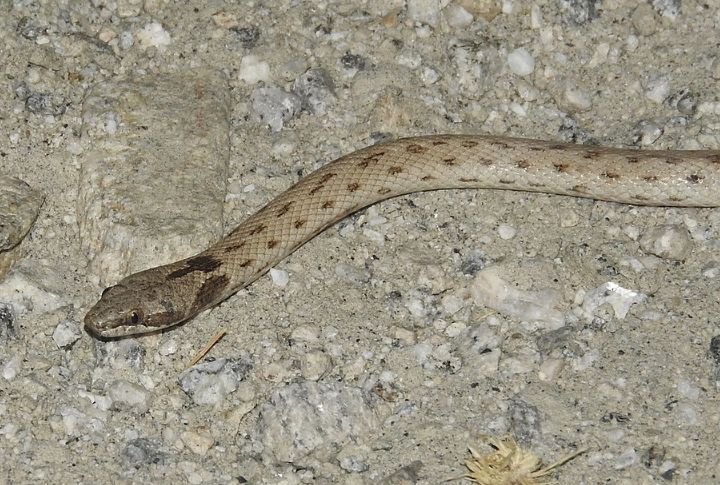
Behind a sandstone outcrop, it might be watching with its cat-like eyes, which hints at its nocturnal nature. Even though it’s rear-fanged, the venom barely affects anything larger than a gecko. Ranging across arid Central California into Baja, it’s colored like dried riverbed clay. By dawn, it hides under a rock and leaves no trace but its silence.
Rosy Boa (Lichanura trivirgata)
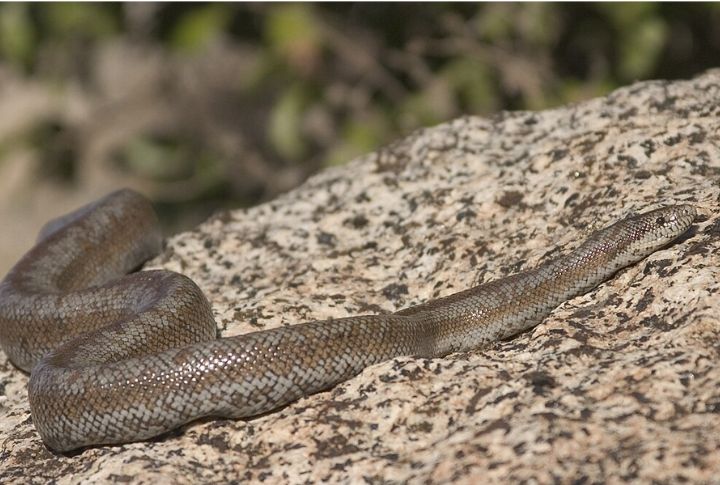
Striped lengthwise in muted orange or gray, the rosy boa coils slowly like it has nowhere to be in a hurry. This gentle serpent lives in rocky, dry hillsides throughout Southern California and Baja. A constrictor by method, it quietly feeds on nestlings and mice. Rarely seen, but when it is, people are surprised to learn that it’s native.
Aquatic Garter Snake (Thamnophis atratus)
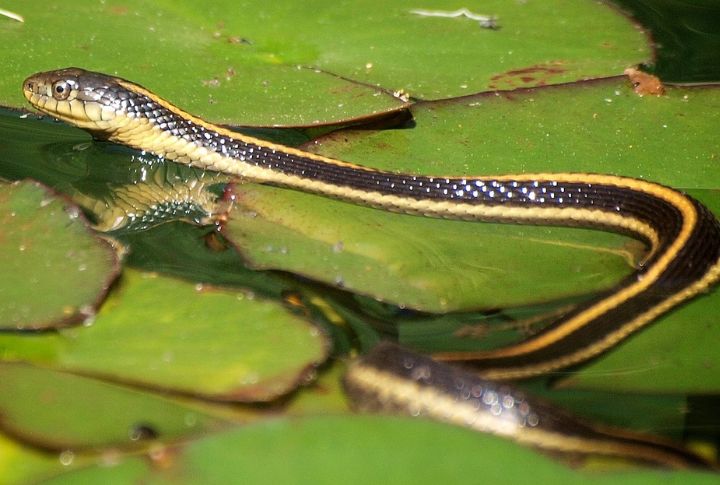
Northern Californian streams with rocky bottoms are prime territory for this slippery customer. Some populations are nearly fully aquatic, which is an unusual trait among garters. Swimming after tadpoles and small fish, their striped backs barely break the water’s surface. Freshwater pollution and stream diversion continue to affect its feeding patterns and population health.
Western Rattlesnake (Crotalus oreganus)
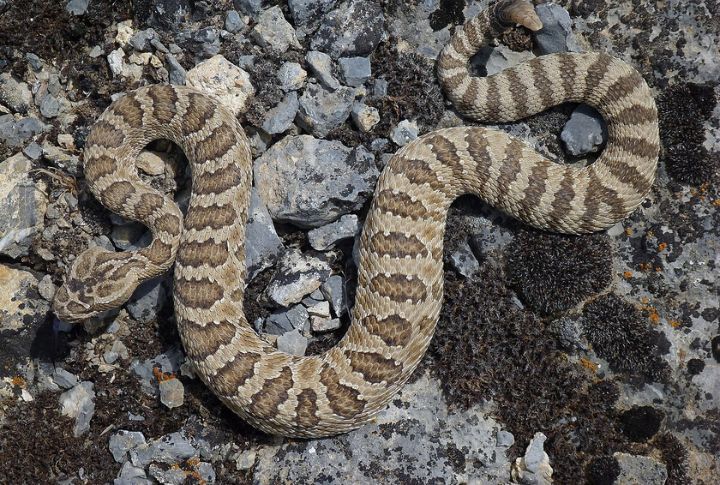
Elevation doesn’t deter it as the critter ranges from sea cliffs to mountain pines. Venom composition in western rattlesnakes varies by region, with most populations having hemotoxic venom, though some may include mild neurotoxic elements. Patterns differ, too: diamonds inland, more irregular along the coast. Eye masks and keeled scales help identify it.
California Mountain Kingsnake (Lampropeltis zonata)
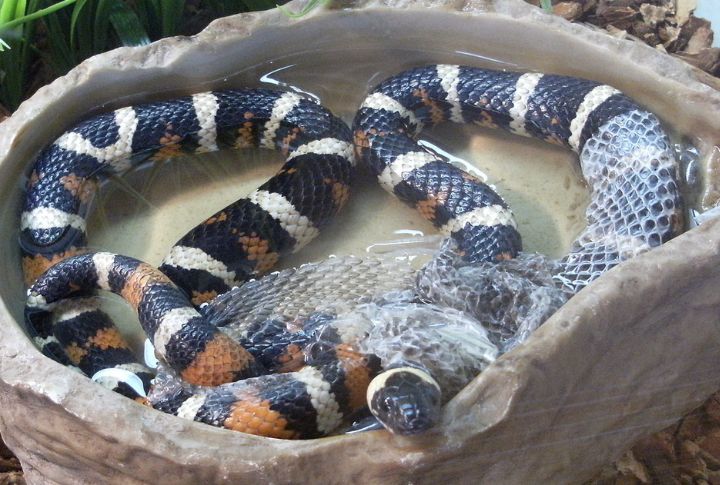
California mountain kingsnakes aren’t venomous, but they are wearing warning colors anyway. Bands of red, black, and cream mimic coral snakes, even though none live in California. This mountain dweller coils beneath pine logs and hunts smaller snakes with startling precision. It can be found as high as 7,000 feet, where cool, moist soil still blankets the forest floor.
Ring-Necked Snake (Diadophis punctatus)
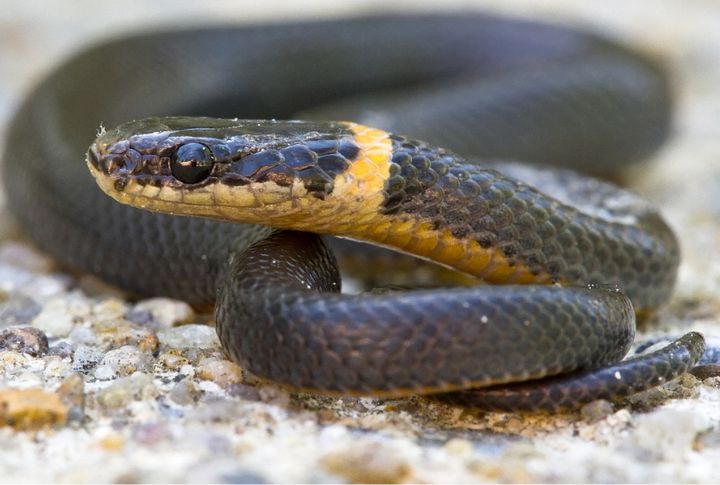
Lift a stone in a damp forest, and you might get the opportunity to see a flash of orange curling into a defensive spiral. The telltale ring around its neck is more flair than function. Small and shy, it feeds on salamanders and earthworms in coastal redwood understories. Despite its vivid warning colors, it’s entirely harmless.
Gopher Snake (Pituophis catenifer)
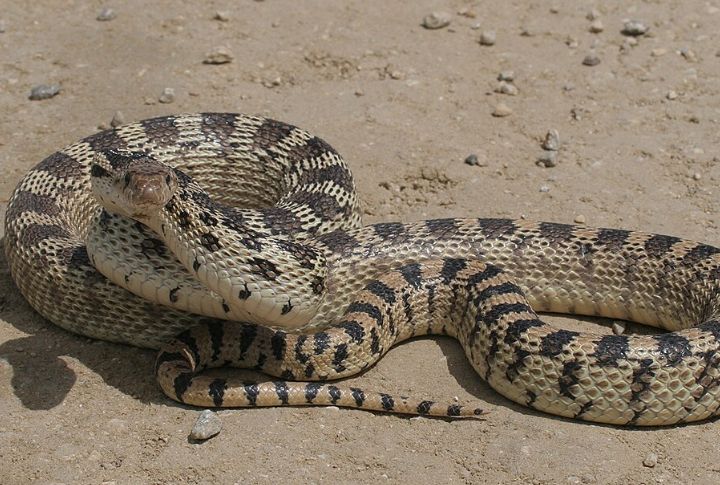
It hisses like a rattler, flattens its head, and vibrates its tail in dry leaves. Did you know that this is all drama? There’s actually no venom. Common across agricultural valleys and foothills, gopher snakes thrive on rodents, sometimes following them into barns and crawlspaces. Strong constriction and adaptability make it one of California’s most effective natural pest managers.\
Sierra Garter Snake (Thamnophis couchii)
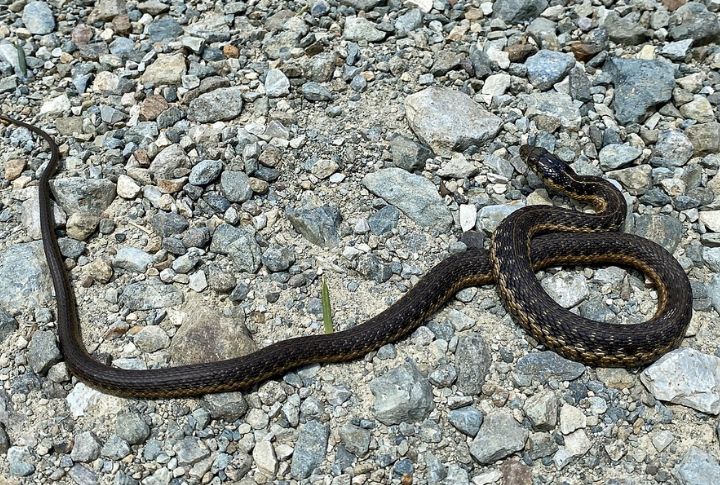
Creeks fed by snowmelt in the Sierra Nevada provide ideal hunting grounds. Adept at stalking, these snakes capture trout fry and amphibian larvae with sharp bursts of movement in icy pools. Their camouflage is often mistaken for a shadow in shallow water. Found at elevations above 1,000 to 7,000 feet, Sierra garters hunt mostly during the summer.
Coast Patch-Nosed Snake (Salvadora hexalepis virgultea)
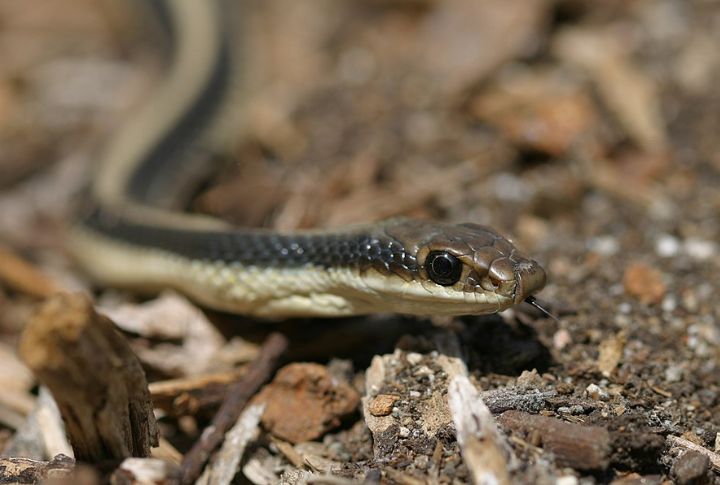
Zoom in on the face of a coast patch-nosed snake, and you’ll see a scale shaped like a wedge. That rostral scale helps it dig through sand for reptile eggs. It bolts in wide, fast arcs when startled. Typically seen in Southern California’s chaparral and scrub, it prefers heat and open terrain—places where it can easily sprint and disappear.
